
Thursday March 27, 2008
New Carrera Porsches!
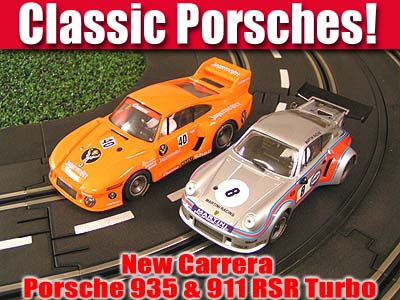 The
latest additions from Carrera are a pair of models that many of you have been
talking about. Regardless of the scale accuracy controversy over the liveries
chosen, both of these models were destined for my collection. After arriving
here safe and sound it was time to let the rubber meet the road and see what
these little machines could do.
The
latest additions from Carrera are a pair of models that many of you have been
talking about. Regardless of the scale accuracy controversy over the liveries
chosen, both of these models were destined for my collection. After arriving
here safe and sound it was time to let the rubber meet the road and see what
these little machines could do.
For hardcore Porsche fans, you might see a few discrepancies in either body shape or liveries, but for the most part Carrera has done a fairly good job at bringing these models to us in scale. Some have mentioned that the Jagermeister livery never really appeared on this year of Porsche, but I will fully admit that I could care less. Pass on a Jagermeister model? You have to be kidding me.
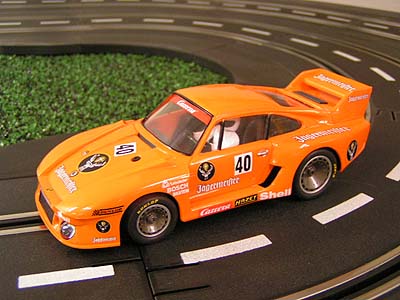
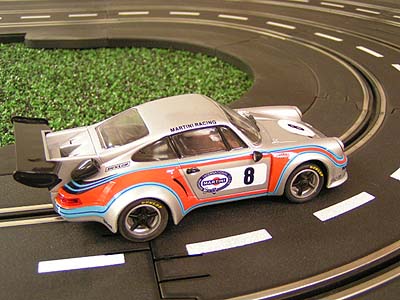
The fantasy liveries created by Scalextric of the IRL models didn't really bother me and the same can be said here. And for the record it doesn't seem to bother most of you either, as those value-based IRL models are sold out. In addition, from the photos I have received from enthusiasts of the Carrera Porsches and the comments with them just seems to solidify that for me. SO either these models are close enough for you or they are not. For those that are interested let us take a closer look at what Carrera has brought to our already growing selection of slot cars.
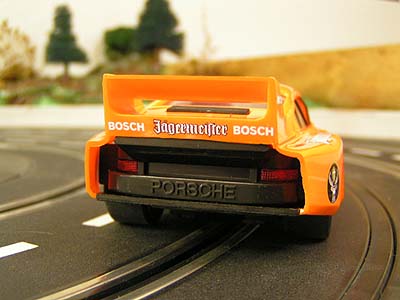
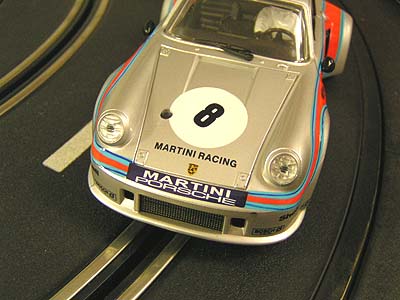
Right out of the box I was impressed with the overall fit and finish of both these releases. Tampo markings were clean and opaque on all of our models with a clean, dirt-free clear coat. I had the chance to inspect 8 models of each and all of them revealed the same results. I did notice some mold lines were a little heavy and on one Martini Porsche there was some slight Tampo un-evenness in the blue stripes. A slight mold line issue was also found in the right rear of one of the 935, but this is VERY minor and at a 3 foot viewing distance it is virtually un-noticeable.
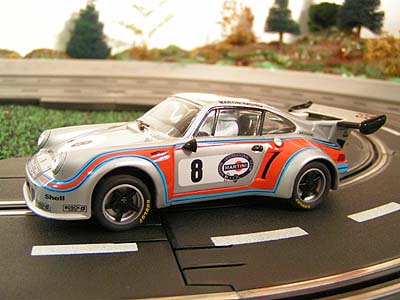
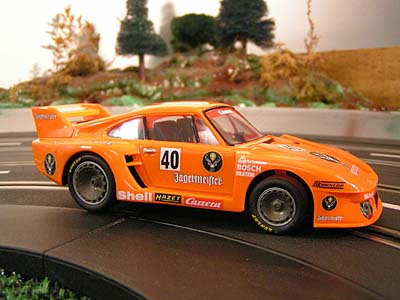
The rear wing on the 911 is adjustable but might fall victim to harder crashes over time. Other than this, these bodies are very durable and should withstand some hard racing. Detail level isn't going to win any awards from fine scale enthusiasts especially in the interior department, but for my taste in models this interior and level of detail is more than adequate.
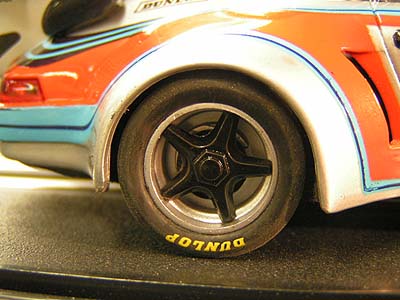
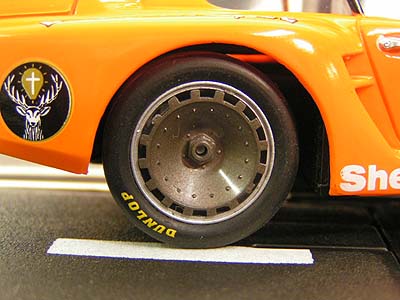
Wheels and tires were a good effort although you will need to get your sand paper ready for some tire-truing. These tires are not as soft a compound as some of you might be getting used too and silicone tires will be a good option for future tuning. All of the axles and wheels were round and true enough but I still noticed some wheel hop that sanding cured quickly. There were some very small mold issues on the 935 as you should see in the photo, but again this is so small that it really does not take away from the models in my opinion.
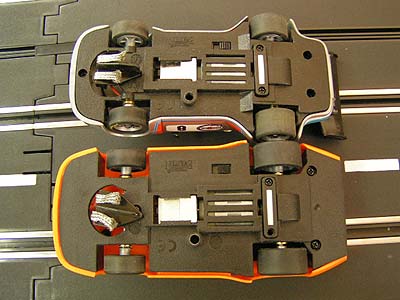
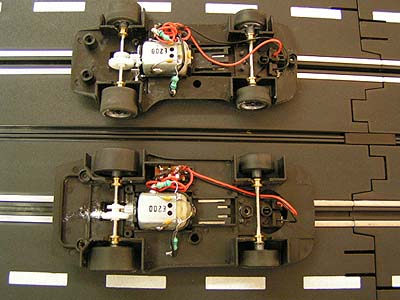
Underneath we see that the chassis are very similar with 3 screws mounting the body to the chassis. On the 935 you need to move the front guide to the side to expose the front screw. We also see the new chassis design with the variable magnet system and bar magnet held in place by 2 screws. Removing these 2 screws and removing the bar magnet exposes the gear system and allows you to add oil when needed. The shim for this bar magnet is included in the separate bag that contains the extra braids, maintenance and tuning instructions. This shim WILL fit under the models and on FLAT track will not rub the rails or track surface. It still will drag slightly on the hump bridges but it does allow you to have a heavier magnet car on flat track, so for those of you with these designs and you like magnets...you should be happy.
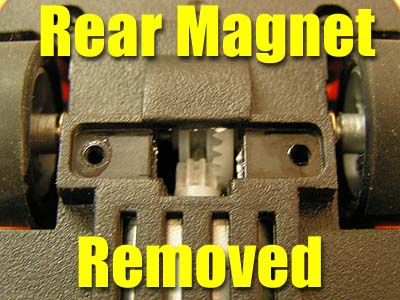
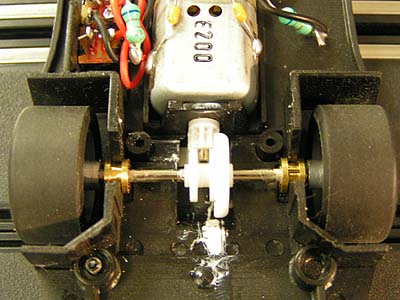
Removing the body we see familiar territory with the Mabuchi motor mounted in the inline position equipped with a 9 tooth pinion turning a 27 tooth spur gear. Both the front and rear axles are held in place by brass bushings and I found them to be very snug in the mounts and didn't require any adhesive to prevent from spinning under load. I did however notice that the motor seemed to flex a little under full throttle so you might want to add a drop or 2 of adhesive on each end to minimize vibration.
Along with the electronics for the polarity switch there are the lead wires running to the front guide. It is here that I am just being nit-picky...but I do not like my wires rubbing on the axle as they do on these models. I know that it would take a great deal of racing to wear through the wires, but it is just one of those "things" with me. I disconnected the lead wires from the guide and re-routed them above the axle just to satisfy myself.
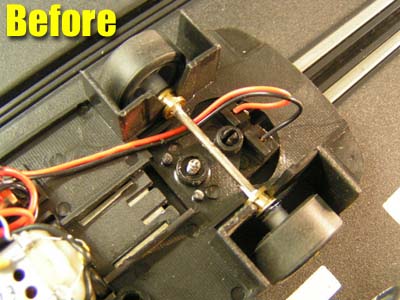
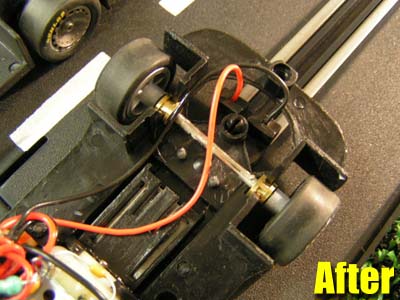
Time for some track testing! Out of the box without the shim installed we managed average lap times of 5.5 seconds with both models and with the shim installed lap times fell down to the 5.1 second range. The 911 with its smaller tires does have slightly more punch to it out of the corners, but side by side these models are very close and provide excellent side-by-side action. Tire replacements will be wanted by many so I decided to play around with other tires to see what we could come up with in the traction department.
For the 935 and its taller wheels, the Fly Capri and Lancia Classic Indy Grips tires fit snugly enough but the will be slightly concaved with a low center. This is easily fixed as the Classic Indy Grips can be sanded for a perfect contour. For the 911 RSR Fly Classics are a great fit and just VERY slightly taller, but again this is easily cured by sanding. I am sure we will see tires made for these models in the future, but for now these tires will fit the bill nicely.
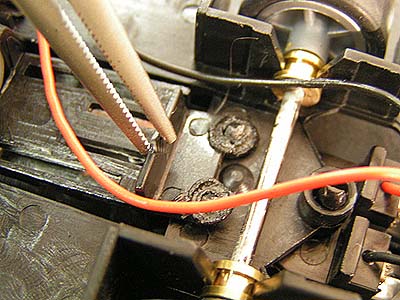
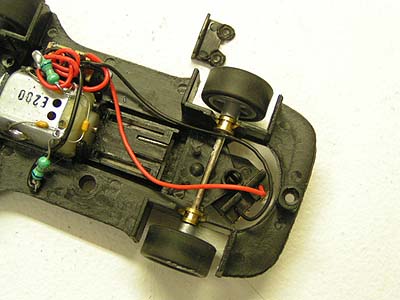
Again, I decided to remove all the magnets to see how these models faired. Once the rear magnet is removed, you can slide the front magnet very far forward and half-tucked under the chassis for a good balance. This helps keep the front end pinned down yet allows you to slide much easier in the corners. Removing the front magnet totally will require that you pop off the magnet bracket inside the chassis. I found that just using needle-nosed pliers on the melted tabs and pulling on them breaks the melted posts free, and then using the pliers again you can pop it right off.
Without magnets our lap times were an average of 6.2 seconds but the times do not reflect just how much fun they are to drive. Tail wagging through the corners was simply what I like to call a "hoot". There is a small amount of room to tune with lead up front inside the chassis with more near the rear of the model. Slick 7 or Pro-Track sheet lead will also fit under the chassis where the magnet/motor area is as well.
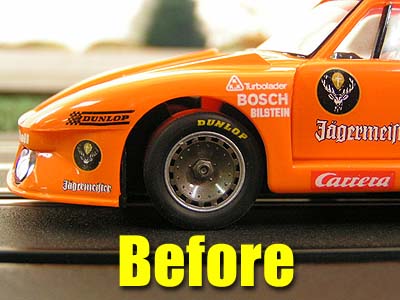
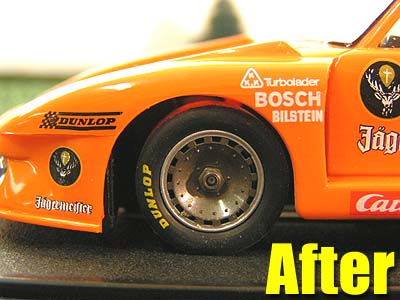
On area that has come to light is the front end and how some feel it is a little too high. After looking at it for awhile I simply trimmed the front body post slightly with a Dremel cut-off disc to lower the body. The effect it gives does make the model look a little better to me overall. Granted, I didn't give it very much, but you could trim and adjust it to suit your tastes.
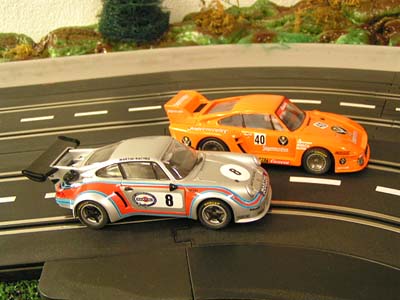 My
final thoughts are that Carrera has once again brought us some very nice slot
cars. They are easily tuned to be very smooth runners and combined with a decent
level of detail should satisfy many enthusiasts. Fans of these cars should
certainly take another look at what these models could offer to their current
line-up.
My
final thoughts are that Carrera has once again brought us some very nice slot
cars. They are easily tuned to be very smooth runners and combined with a decent
level of detail should satisfy many enthusiasts. Fans of these cars should
certainly take another look at what these models could offer to their current
line-up.
- Harry
As always feel free to contact me about this article or just the hobby in general at harry@homeracingworld.com, or better yet drop into our Message Forum and share your thoughts with other enthusiasts!
Many thanks go to Gene of SlotCarPlace for helping with solving the front end issues. Drop by there and check out other advanced tuning of these models that he has accomplished.